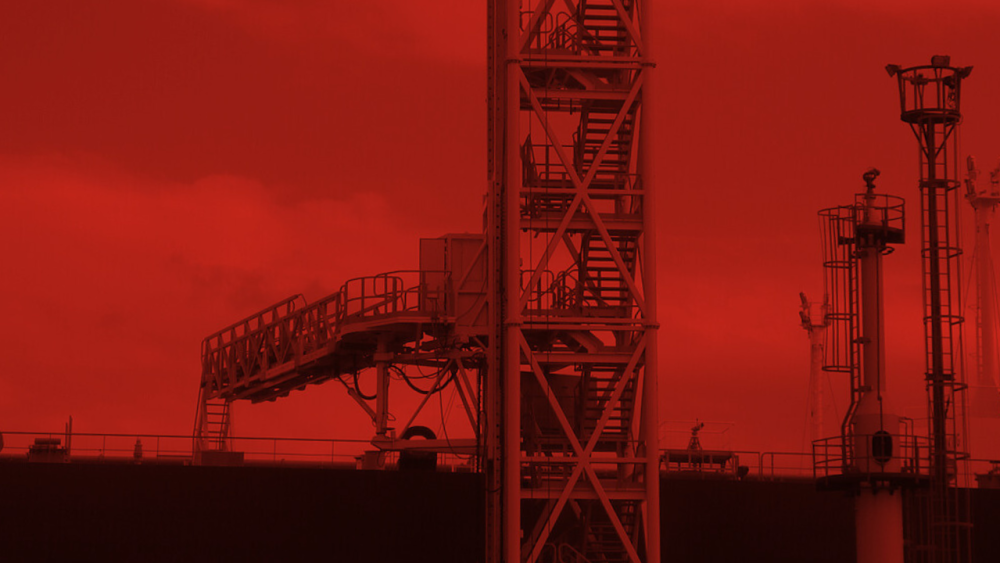In today’s port environment—where operational safety and logistical efficiency are essential—every infrastructure component must be optimized. Access systems to vessels, also known as gangways, are one of these critical elements. Among them, the telescopic gangway has emerged as one of the most advanced and versatile solutions to ensure safe transit between land and ship.
But what exactly is it? And why are so many industrial and energy terminals adopting this technology?
How does a telescopic gangway work?
A telescopic gangway is an extendable walkway between the dock and the vessel, designed to ensure safe transit—even when there are differences in elevation between dock and ship, tidal variations, or vessel movement.
What sets it apart from other maritime gangways is its telescopic capacity, allowing it to adjust its length safely and precisely. The structure consists of sliding steel or aluminum sections that extend or retract depending on the operational need. This versatility allows the walkway to follow the ship’s movement without compromising the safety of those on board—especially crucial in high-traffic terminals handling a variety of vessels.
Thanks to systems such as link-driven chains—electrical or hydraulic—developed by Prosertek, the gangway can extend, retract, rotate horizontally, or elevate with pinpoint precision, even in adverse weather conditions. This engineering approach combines structural strength with smooth, reliable operation.
See our gangways in action:
Where are telescopic gangways used?
This type of walkway is especially useful in the following settings:
- Energy plants and LNG terminals
- Offshore platforms
- Industrial ports with high traffic of cargo and service vessels
- Maintenance zones and shipyards
- Port infrastructures with variable docking positions
This adaptability is especially valuable in environments where operations demand solutions capable of responding to ship drift and elevation changes. Prosertek’s telescopic gangways excel in precisely this capacity: dynamically adjusting to each situation without losing stability or compromising transit safety.
Learn more in our article on types of telescopic walkways in port operations.
How they improve efficiency in port operations
Beyond safety, telescopic gangways directly impact the overall efficiency of the port. How?
- Reduce docking times: Always ready and self-adjusting to the vessel, they eliminate the need for manual setup or temporary systems.
- Enable continuous operations: No need to interrupt workflows or clear dock space.
- Improve safety: A stable gangway with integrated safety systems reduces the risk of falls, entrapments, or slips.
Additionally, with their modular design and optimized mechanics, Prosertek gangways require minimal maintenance—key in high-turnover ports or remote areas where technical intervention must be kept to a minimum. In short, they’re not just safe—they actively enhance port productivity.
What to consider when choosing a telescopic gangway
Choosing the right gangway requires evaluating several key factors:
- Physical layout of the dock to define operational ranges
- Type and variety of vessels in operation
- Local environmental and weather conditions
- Usage frequency and automation requirements
- Applicable local and international regulations
At Prosertek, we provide technical consulting from analysis to commissioning, with tailored solutions for each project.
Prosertek’s telescopic gangways: reliability, technology and customization
At Prosertek, we have been developing high-engineering port solutions for over three decades. Our telescopic gangways are designed to operate in demanding environments, offering maximum customization, structural reliability and advanced control systems.
These walkways reflect our philosophy of constant innovation, with each system tailored to real operational needs. We deliver turnkey solutions, from consulting and design to manufacturing, installation, testing and high-availability technical support.
Our value proposition also includes a strong commitment to sustainability. The robustness, durability and energy efficiency of our gangways contribute to building more resilient and environmentally respectful port infrastructures.
The telescopic gangway is not just a bridge—it’s a critical tool for safety, efficiency and operational adaptability. In a sector where margins for error are minimal, relying on high-performance equipment like Prosertek’s makes the difference.



Comments are closed.